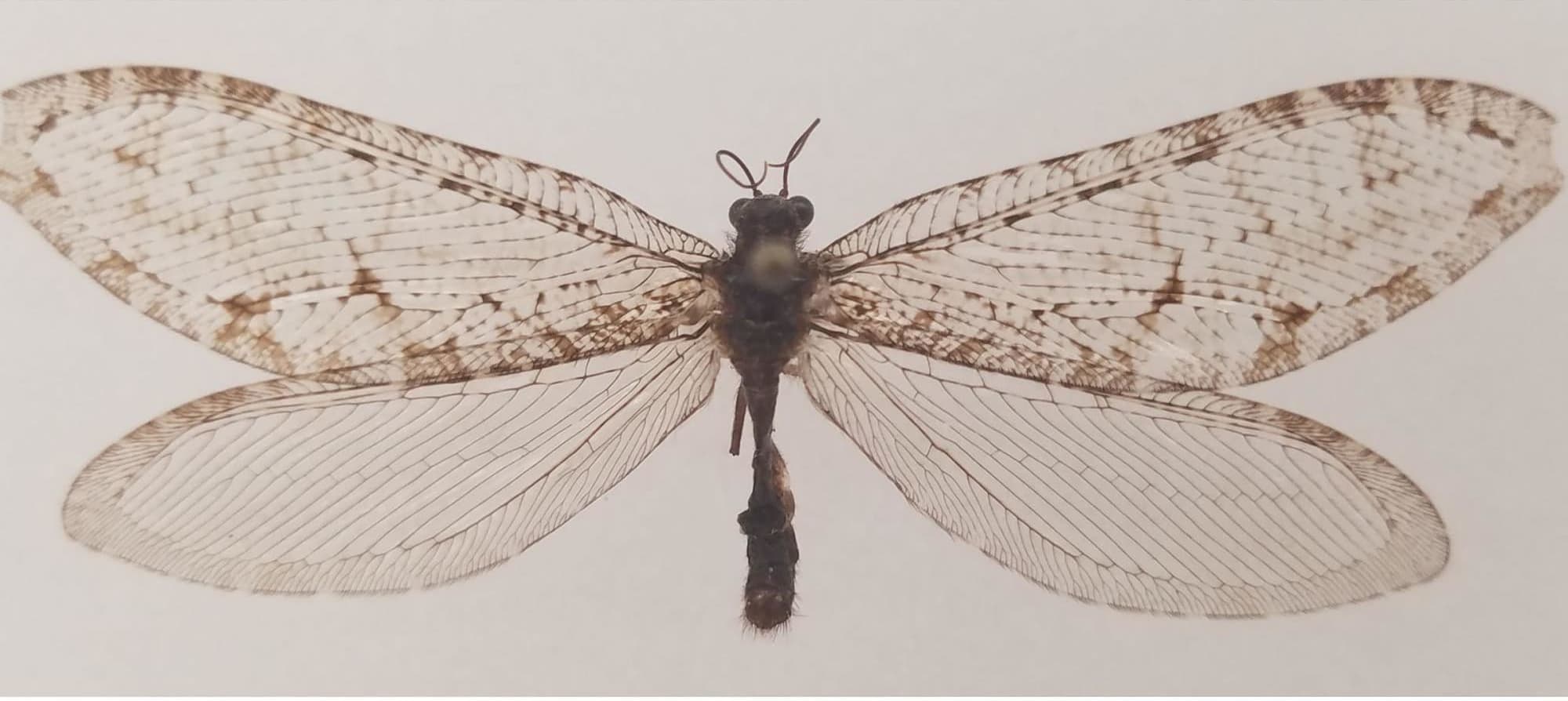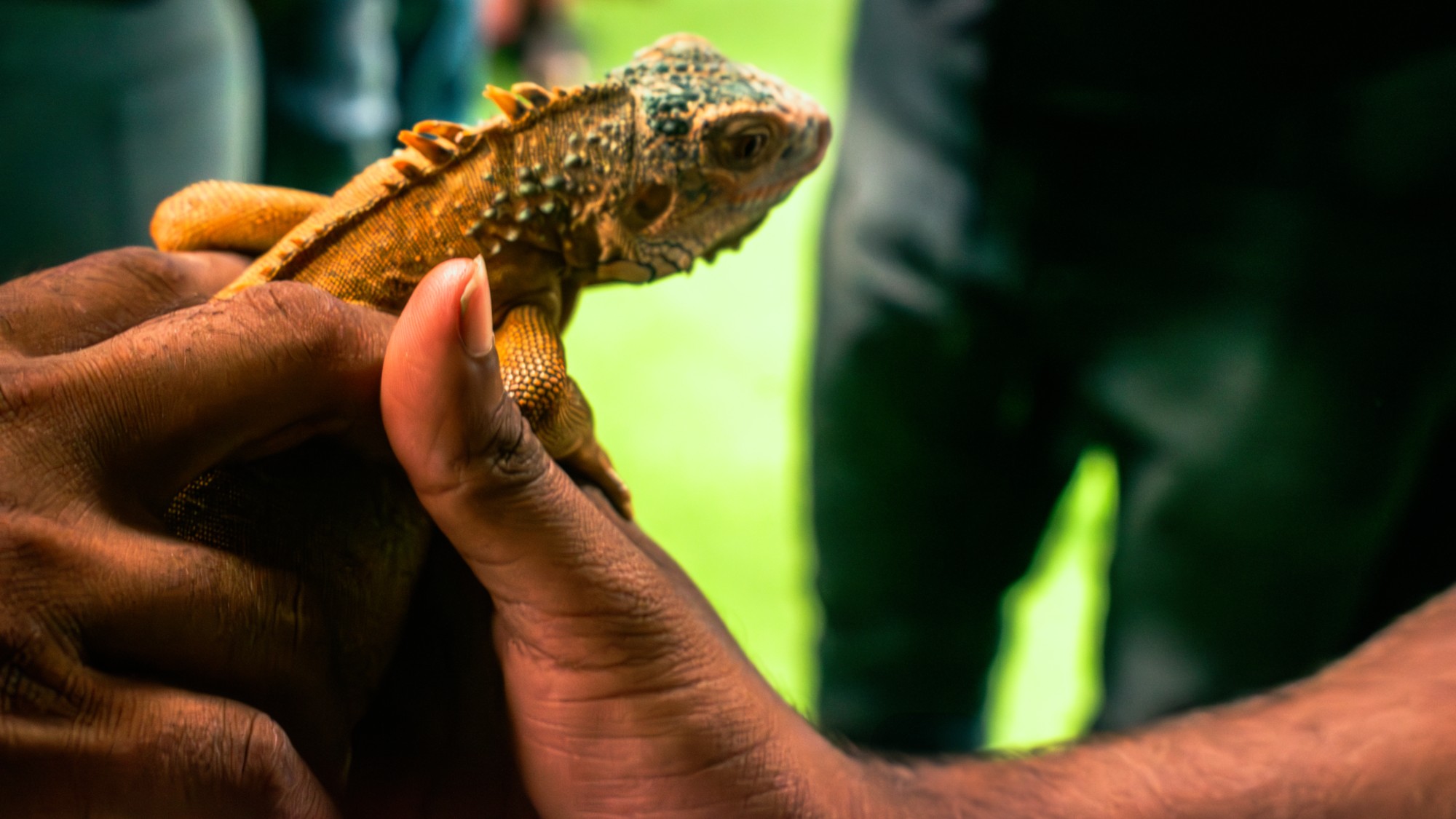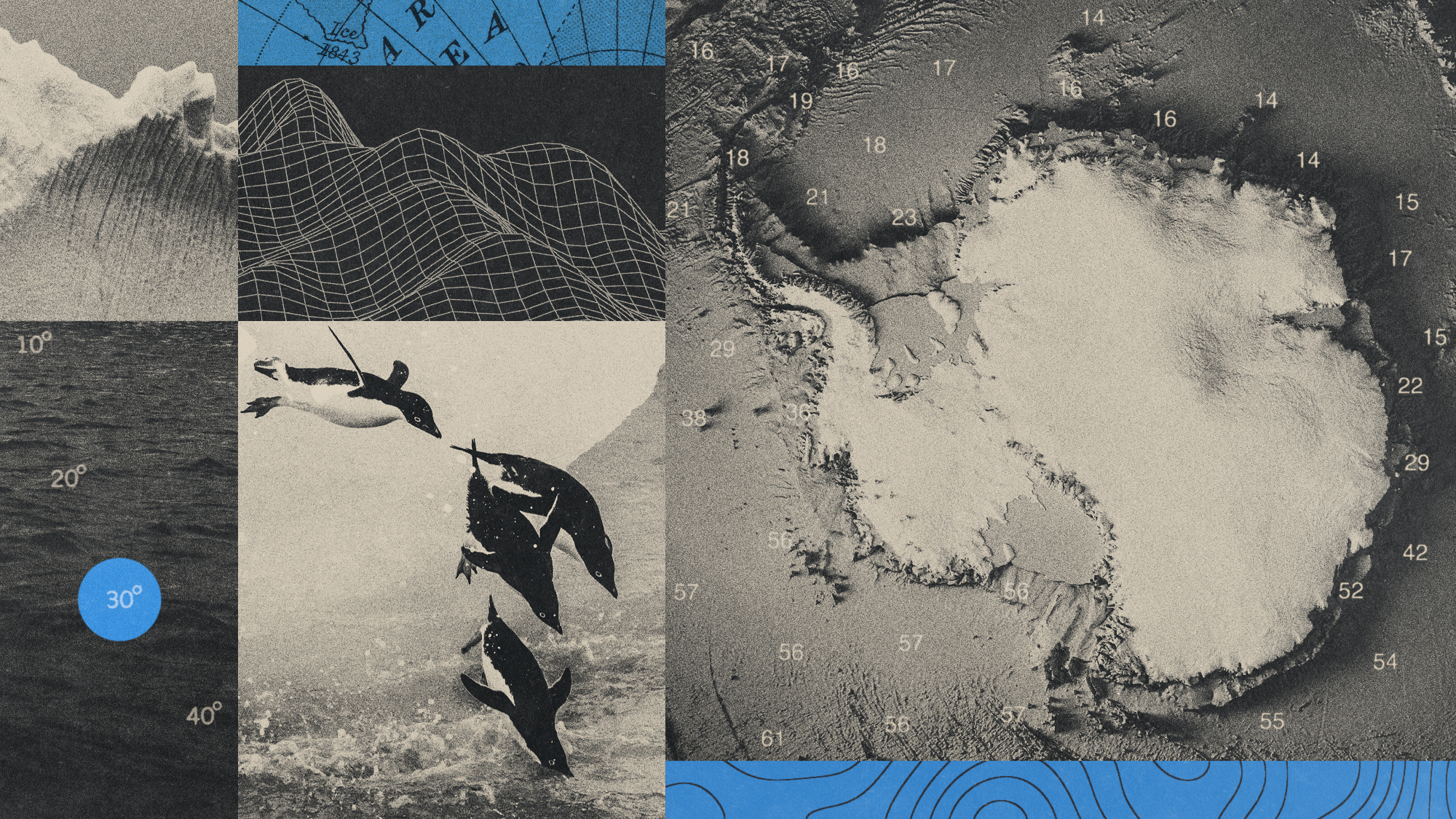Jurassic-era insect discovered at Arkansas Walmart

In 2012, Michael Skvarla, director of Penn State University's Insect Identification Lab, picked up what he thought was just an antlion — a fairly common flying insect — from the side of an Arkansas Walmart. But as it turns out, it was actually a Polystoechotes punctata, or giant lacewing, an insect from the Jurassic era.

Though once common, the giant lacewing "was mysteriously extirpated from eastern North America by the 1950s," according to a press release from Penn State. Skvarla's finding was the first of its kind in the past 50 years. Giant lacewing fossils date back to the Middle Jurassic era, over 160 million years ago. Fossil lacewing insects are also "much more abundant compared to living ones," per the authors of a 2018 study on lacewing fossil findings.
Scientists are still unsure why the insect disappeared, but have hypothesized that urbanization and habitat changes may have played a role. "Entomology can function as a leading indicator for ecology," Skvarla said. "The fact that this insect was spotted in a region that it hasn't been seen in over half a century tells us something more broadly about the environment."
The Week
Escape your echo chamber. Get the facts behind the news, plus analysis from multiple perspectives.

Sign up for The Week's Free Newsletters
From our morning news briefing to a weekly Good News Newsletter, get the best of The Week delivered directly to your inbox.
From our morning news briefing to a weekly Good News Newsletter, get the best of The Week delivered directly to your inbox.
Skvarla discovered he had misidentified the insect while teaching a Zoom class in 2020 when he noticed that the characteristics of antlions did not match up with the specimen he found. In 2022, he published his findings in the journal, Proceedings of the Entomological Society of Washington.
"This discovery suggests there may be relictual populations of this large, charismatic insect yet to be discovered," he said.
A free daily email with the biggest news stories of the day – and the best features from TheWeek.com
Devika Rao has worked as a staff writer at The Week since 2022, covering science, the environment, climate and business. She previously worked as a policy associate for a nonprofit organization advocating for environmental action from a business perspective.
-
 The most memorable podcasts of 2025
The most memorable podcasts of 2025The Week Recommends A round-up of the year's top podcasts that kept listeners tuned in
-
 What is Roomba’s legacy after bankruptcy?
What is Roomba’s legacy after bankruptcy?In the Spotlight Tariffs and cheaper rivals have displaced the innovative robot company
-
 SiriusXM hopes a new Howard Stern deal can turn its fortunes around
SiriusXM hopes a new Howard Stern deal can turn its fortunes aroundThe Explainer The company has been steadily losing subscribers
-
 Blue Origin launches Mars probes in NASA debut
Blue Origin launches Mars probes in NASA debutSpeed Read The New Glenn rocket is carrying small twin spacecraft toward Mars as part of NASA’s Escapade mission
-
 Why scientists are attempting nuclear fusion
Why scientists are attempting nuclear fusionThe Explainer Harnessing the reaction that powers the stars could offer a potentially unlimited source of carbon-free energy, and the race is hotting up
-
 Dinosaurs were thriving before asteroid, study finds
Dinosaurs were thriving before asteroid, study findsSpeed Read The dinosaurs would not have gone extinct if not for the asteroid
-
 Parthenogenesis: the miracle of 'virgin births' in the animal kingdom
Parthenogenesis: the miracle of 'virgin births' in the animal kingdomThe Explainer Asexual reproduction, in which females reproduce without males by cloning themselves, has been documented in multiple species
-
 Canyons under the Antarctic have deep impacts
Canyons under the Antarctic have deep impactsUnder the radar Submarine canyons could be affecting the climate more than previously thought
-
 SpaceX breaks Starship losing streak in 10th test
SpaceX breaks Starship losing streak in 10th testspeed read The Starship rocket's test flight was largely successful, deploying eight dummy satellites during its hour in space
-
 NASA is moving away from tracking climate change
NASA is moving away from tracking climate changeThe Explainer Climate missions could be going dark
-
 A rat infestation is spelling trouble for the almond industry
A rat infestation is spelling trouble for the almond industryThe Explainer The infestation has affected at least 100,000 acres in California
